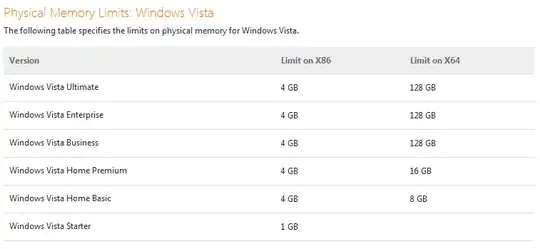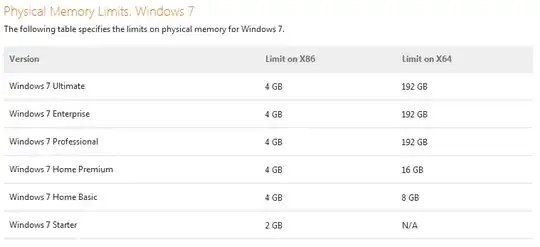Windows reserves some memory for it's internal use which is not normally allocated to applications. This reserve is seen most easily if you run without a page file or limit the pagefile to relatively small size (such as 3GB). Windows will allocate primarily RAM up to the limit, fill up remaining free space in the page file (if any) and issue a low memory warning when there is no page file space left and the allocated RAM limit is exceeded.
The limit appears to be a percentage of the total system RAM. Windows 7 x64 limit is discussed here and methods for circumventing the "low memory warning" is discussed here.
Disabling the low memory warning has some advantages - You can use some 600MB more RAM on 8GB machine) But there is a serious disadvantage - When you're out of ram, programs will crash.
How much RAM can you allocate on 8GB Windows 8 x64 before you get the low memory warning? Is it possible to adjust the warning threshold?
Edit: I can't answer this myself as it got closed due to arguing for arguing's sake. However I answered it here: What is the "low memory warning" threshold with 16GB x64 windows?
In short, yes, Windows 8.1 x64 will behave the same way as Windows 7 x64 did. If you're low on Commit limit - Commit charge, a fairly large percentage of RAM is still kept available if at all possible. This is done by moving more things into pagefile.
What is the "low memory warning" threshold with 16GB x64 windows?



